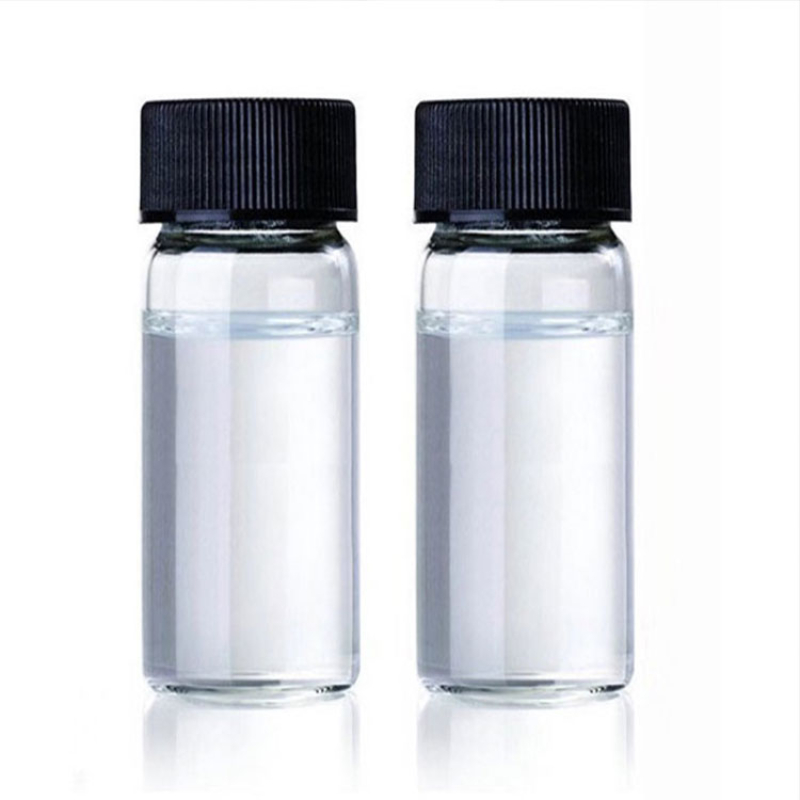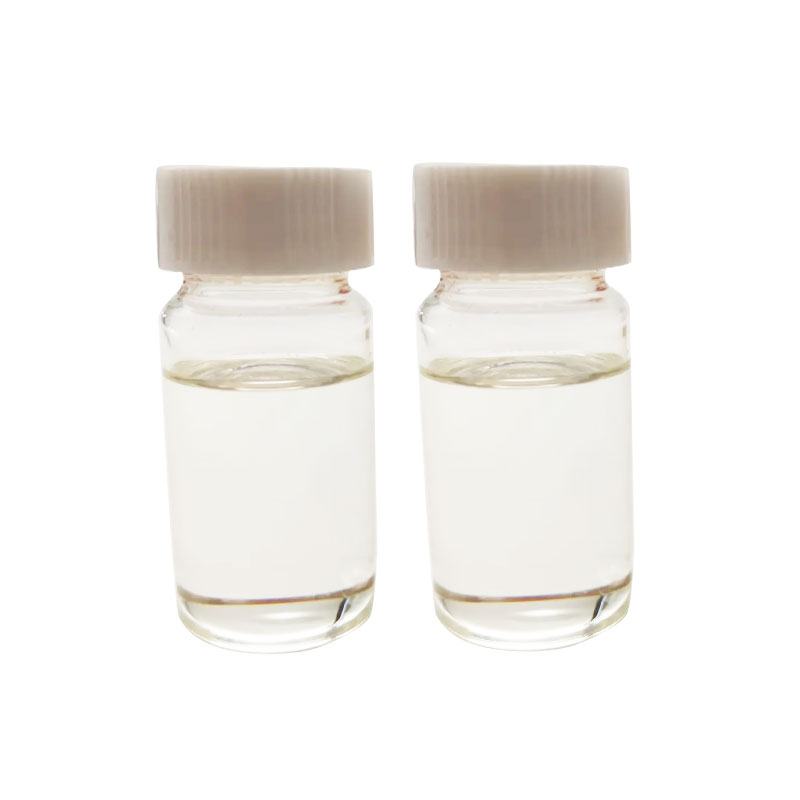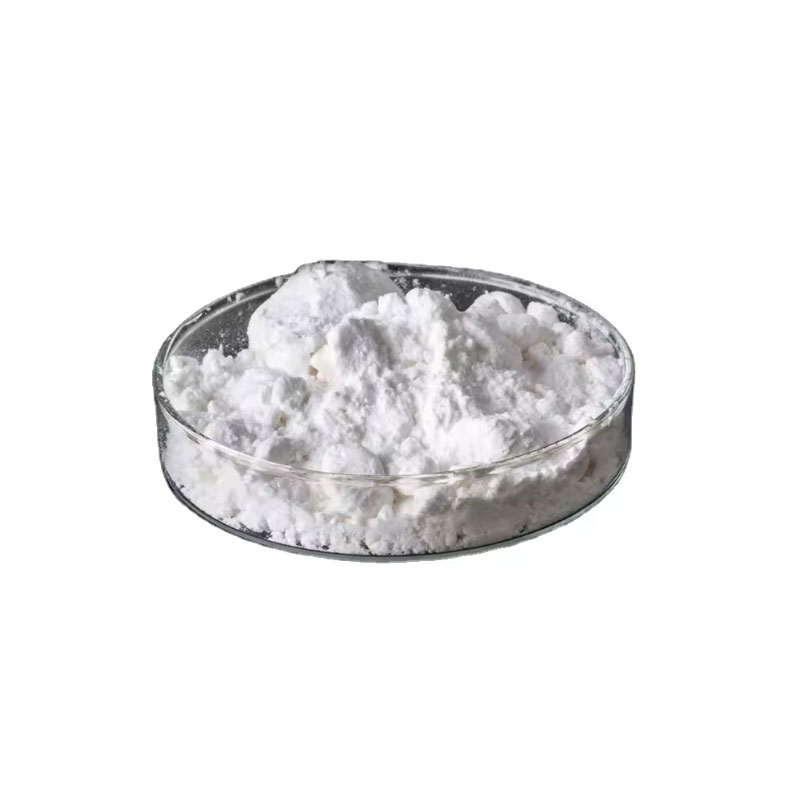Products Description of Diethyl Ethoxymethylenemalonate CAS#87-13-8Ethoxymethylene, also known as diethyl ethoxymethylenemalonate, is a colorless, transparent and viscous liquid. It is an important pharmaceutical intermediate and is widely used in the synthesis of medicines, pesticides and auxiliaries.
Contact Now
Methylcyclopentadienyl Manganese Tricarbonyl CAS# 12108-13-3Manganese, tricarbonyl methylcyclopentadienyl is a dark orange liquid. Faintly pleasant, herb-like odor. Molecular weight= 218.10;Boiling point=232℃; Freezing/Melting point=18℃; Flash point=74℃; 96℃. Hazard Identification (based on NFPA-704 M Rating System): Health 3, Flammability 0, Reactivity 0.
Contact Now
Products Description of 3-Acetyl-2,5-Dichlorothiophene CAS#36157-40-13-Acetyl-2,5-dichlorothiophene is an organic intermediate and pharmaceutical intermediate. 3-Acetyl-2,5-Dichlorothiophene Chemical PropertiesMelting point 37-40 °C (lit.)Boiling point 120-122°C 4mmdensity 1.4514 (estimate)Fp >230 °Fstorage temp. Keep in dark place,Inert atmosphere,2-8°Cform solidcolor White to Yellow to OrangeBRN 121288CAS DataBase Reference36157-40-1(CAS DataBase Reference)NIST Chemistry Reference2,5-Dichloro-3-thienyl methyl ketone(36157-40-1)Sa
Contact Now
Products Description of PyridiniumCAS#68909-18-2White powderPyridinium, 1-(phenylmethyl)-, ethyl methyl derivs., chlorides Chemical PropertiesBoiling point 116.34℃[at 101 325 Pa]density 1.104[at 20℃]vapor pressure 2hPa at 20℃Water Solubility 100g/L at 30℃InChIInChI=1S/C13H16N.ClH/c1-14(10-6-3-7-11-14)12-13-8-4-2-5-9-13;/h2-10H,11-12H2,1H3;1H/q+1;/p-1InChIKeyNBNVYJFZJWMHPR-UHFFFAOYSA-MSMILESC1[N+](CC2=CC=CC=C2)(C)C=CC=C1.[Cl-]LogP3 at 25℃EPA Substance Registry System1-(Phenylmethyl)pyridinium Et Me derivs., chlorides (68909-18-2)Factory and Equipment ShowFast delivery t
Contact Now
Products Description of Hydrogenated Starch Hydrolysate CAS#68425-17-2Hydrogenated Starch Hydrolysate is a colorless, odorless, transparent, viscous liquid. It is non-crystalline. It has strong hygroscopicity, sweet taste, and is highly soluble in water but difficult to dissolve in ethanol.
Contact Now
Products Description of N-Methyl-2-pyrrolidone CAS#872-50-4N-Methylpyrrolidone is referred to as NMP, molecular formula: C5H9NO, English: 1-Methyl-2-pyrrolidinone, appearance is colorless to light yellow transparent liquid, slightly smell of ammonia, miscible with water in any proportion, soluble in ether, acetone And various organic solvents such as esters, halogenated hydrocarbons, aromatic hydrocarbons, etc., almost completely mixed with all solvents, with a boiling point of 204°C and a flash point of 91°C. It has strong hygroscopicity and stable chemical properties.
Contact Now
Products Description of Glycidol CAS#556-52-5Glycidyl alcohol is also called glycidol. This substance is used as a stabilizer for natural oils and vinyl polymers, demulsifiers, dyeing and layering agents, and is used in surface coatings, chemical synthesis, fungicides, etc.
Contact Now
Products Description of Octamethylcyclotetrasiloxane CAS#556-67-2Octamethylcyclotetrasiloxane, referred to as D4, is a colorless, transparent or milky white liquid, flammable and odorless.
Contact Now
Products Description of 4-Bromopyridine hydrochlorideCAS#19524-06-24-Bromopyridine hydrochloride is a white crystalline solid at room temperature and pressure. It has a certain degree of hygroscopicity and is easily deliquescent in water. It is often used as a coupling reagent and a precursor molecule of pyridine derivatives in organic synthetic chemistry. When used, it is often pre-treated with alkali to release 4-bromopyridine.
Contact Now
Products Description of 7-Diethylamino-4-methylcoumarin CAS#91-44-17-Diethylamino-4-methylcoumarin is a vital organic compound with a spectrum of applications, predominantly utilized as a fluorescent brightening agent in the textile and paper industries, enhancing the whiteness and brightness of materials. Our collaboration cases exemplify its integration in improving the luminosity of various products, a testament to its effectiveness in real-world applications.
Contact Now
Products Description of Quercetin CAS#117-39-5Yellow needle-shaped crystalline powder. It is heat stable, with a decomposition temperature of 314°C. It can improve the light resistance of pigments in food and prevent the change of food flavor. It will change color when it encounters metal ions. It is slightly soluble in water and easily soluble in alkaline aqueous solution. Quercetin and its derivatives are a class of flavonoid compounds widely found in various vegetables and fruits. Such as onions, sea buckthorn, hawthorn, sophora japonica, tea, etc.
Contact Now
Products Description of 4-tert-Amylphenol CAS#80-46-64-tert-Amylphenol is an organic compound characterized by a phenolic structure with a tert-amyl (4-methyl-2-pentyl) group attached to the para position of the benzene ring. It is used in various applications, including as a stabilizer in polymers and as an intermediate in the synthesis of other organic compounds.
Contact Now
Cyclohexanone CAS#108-94-1Cyclohexanone is a colorless, clear liquid with soil smell; its impure product seems as mild yellow color. It is miscible with numerous different solvents. without difficulty soluble in ethanol and ether. The decrease publicity restrict is 1.1% and the higher publicity restriction is 9.4%.
Contact Now
Fumed Silica CAS#112945-52-5Synthetic Amorphous Silica has interesting thickening and thixotropic properties, and an enormous external surface area. It is produced by a vapor phase hydrolysis process using chlorosilanes or substituted silanes such as, silicon tetrachloride in a flame of hydrogen and oxygen. This material is formed and collected in a dry state.
Contact Now
Dichloroethane CAS#1300-21-6Chemical Properties:Dichloroethane is a colorless and transparent oily liquid with a chloroform-like odor and a sweet taste. It is very easy soluble in water, miscible with ethanol, chloroform and ether,it also can dissolve oil and grease, grease, paraffin. It is mainly used as a solvent.Application:Dichloroethane can be used as a standard reagent for chromatography; it is also used as a solvent for resins, rubber, cellulose acetate, cellulose esters, paints and polymers such as polystyrene; it is also used as a raw material for organic synthesis.
Contact Now
Products Description of Chlorpropham CAS#101-21-3Chlorofen, also known as clopfen, is an organic compound with the chemical formula C10H12ClNO2. It is a light brown crystalline powder and is insoluble in water. It is a plant growth regulator and herbicide that can effectively control wheat, corn, and alfalfa.
Contact Now
Products Description of Silicon carbide CAS#409-21-2Silicon carbide, commonly known as diamond, is a ceramic compound formed by bonding silicon and carbon. Silicon carbide exists in nature in the form of a rare mineral called moissanite. Since 1893, silicon carbide powder has been used as an abrasive in large quantities. Sintering silicon carbide powder can produce hard ceramic silicon carbide particles, which can be used in materials that require high durability, such as automotive brake pads, clutches and bulletproof vests.
Contact Now
Products Description of 1,2,3,4-TETRAHYDROISOQUINOLINE CAS#91-21-4Tetrahydroisoquinoline (TIQ) is an organic compound with the chemical formula C9H11N. It is classified as a secondary amine and is obtained from isoquinoline by hydrogenation.
Contact Now
Products Description of Hydroxypropyl-beta-cyclodextrin CAS#94035-02-6This product is a white or off-white amorphous or crystalline powder; odorless, slightly sweet taste; strong hygroscopicity.
Contact Now
Products Description of 2,3-Dibromothiophene CAS#3140-93-02,3-Dibromothiophene is an important pharmaceutical intermediate.2,3-Dibromothiophene chloride Chemical PropertiesMelting point -17.5°CBoiling point 218-219 °C (lit.)density 2.137 g/mL at 25 °C (lit.)refractive index n20/D 1.632(lit.)Fp 125 °Fstorage temp. Keep in dark place,Inert atmosphere,2-8°Cform liquidSpecific Gravity2.137color White to Yellow to GreenSensitive Light SensitiveBRN 107512InChIKeyATRJNSFQBYKFSM-UHFFFAOYSA-NCAS DataBase Reference3140-93-0(CAS DataBase Re
Contact Now
Products Description of 2,4,6-Tri-tert-butylphenol CAS#732-26-3Organic synthesis. Aviation gas oil antioxidant. Anti-aging agent for natural rubber and synthetic rubber. Low-efficiency stabilizer for synthetic rubber.
Contact Now
Products Description of Diethylamino hydroxybenzoyl hexyl benzoate CAS#302776-68-7Diethylamino hydroxybenzoyl hexyl benzoate is an organic peroxide with strong oxidizing effect. It is easy to produce highly active free radicals during thermal decomposition. It is thermally unstable and may decompose at relatively low temperatures. During the decomposition process of diethylamino hydroxybenzoyl hexyl benzoate, a large amount of heat and gas is released, which increases the temperature and accelerates the decomposition.
Contact Now
1-Butanol CAS#71-36-3n-Butyl alcohol is a colourless flammable liquid with sturdy alcoholic odour. n-Butyl alcohol is a fantastically refractive liquid and burns with a strongly luminous flame. It is incompatible with robust acids, sturdy oxidising agents, aluminium, acid chlorides, acid anhydrides, copper, and copper alloys. n-Butyl alcohol has an considerable use in a giant quantity of industries.
Contact Now
Products Description of Formaldehyde CAS#50-00-0Formaldehyde is the simplest aldehyde molecule with active chemical properties and certain toxicity. At room temperature, it is a colorless gas with a pungent odor, which easily undergoes polymerization to form polyformaldehyde. Formaldehyde is easily soluble in water, alcohol and other organic solvents.
Contact Now

































